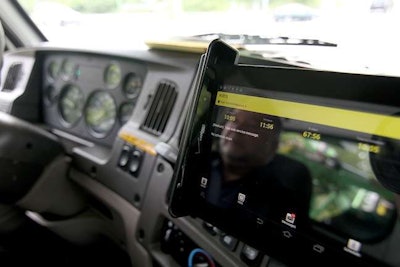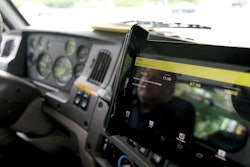
The agency unveiled the ELD mandate rule March 13 — Click here to read more on the rule.
Driver harassment was the deciding factor in the derailment of the last rule, which mandated electronic onboard recorders, as a federal court vacated the rule in its entirety because it hadn’t properly safeguarded drivers from potential harassment.
Congress also stepped in with the MAP-21 highway funding act from 2012: The law dictated that an ELD mandate come within a year of the law being enacted, but it also directed the agency to develop measures to prevent drivers from being harassed with the devices.
FMCSA outlines eight proposed provisions to help prevent driver harassment with ELDs:
Requiring drivers’ access to records: The rule would require that drivers have the ability to obtain copies of their ELD records “on or through” the devices. It also would require that carriers give drivers copies of their records (for the six months carriers are required to keep the records) when a driver asks for them.
Explicitly prohibiting harassment: In the rule the agency prohibits carriers from harassing drivers with the devices. Harassment, per the rule, means “an action… involving the use of information available through an ELD…that the carrier knew or should have known would result in” a driver violating FMCSA regulations regarding fatigue or illness.
Instituting complaint procedures: The rule implements a process by which drivers should file harassment complaints, including what the complaint would need to include: the action the carrier took and how ELD technology was used to contribute to the alleged harassment action.
Stiffening penalties to deter harassment: The new rule dictates that harassment will now be considered a violation of hours-of-service rules, and “the penalty for harassment would supplement the underlying HOS violations,” according to the rule.
Requiring mute functionality: As drivers have complained of carriers contacting them during rest periods through an ELD or related fleet management system, the rule stipulates that when a driver places an ELD into sleeper berth status, the device must automatically mute and turn off any sound output or at least allow the driver to manually mute the device when in sleeper mode.
Instituting edit rights: The rule allows drivers and carriers to request edits to the electronic records of duty status. “Edit,” according to the rule, means a change that would not overwrite the original record, however. All edits or annotations on the records would be required to show who made them and the reason for the change. Edits made by carriers or drivers would need to be sent to the other party for approval.
Limiting portions of vehicle location tracking: The rule does not require real-time vehicle tracking or location recording and does not require transmission of real-time location to carriers or law enforcement. Location data will be sent when: a driver changes duty status, a driver inputs personal use or yard moves, the truck’s engine powers on or off and at 60-minute intervals when the vehicle’s in motion.
Allowing privacy in enforcement proceedings: MAP-21 directs FMCSA to institute measures to protect drivers’ personal data when information from an ELD is used in enforcement proceedings. To do this, the agency says it will redact information before a document is made publicly available.
Click here to see Overdrive’s previous coverage of the March 13 announced ELD mandate.










